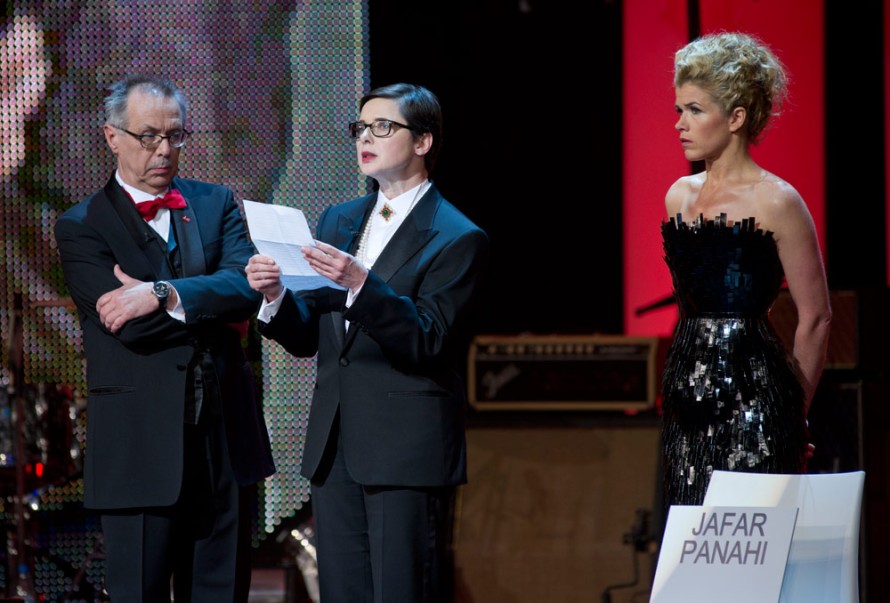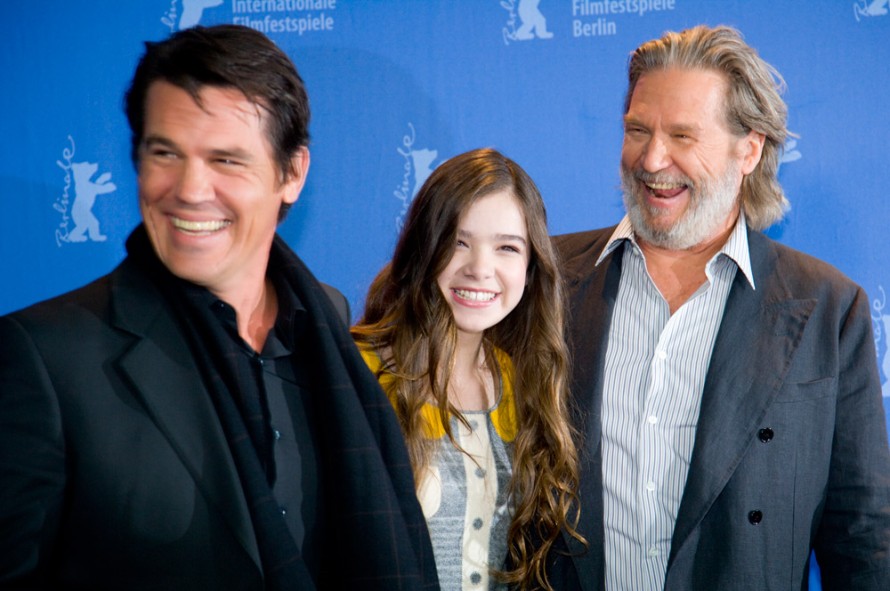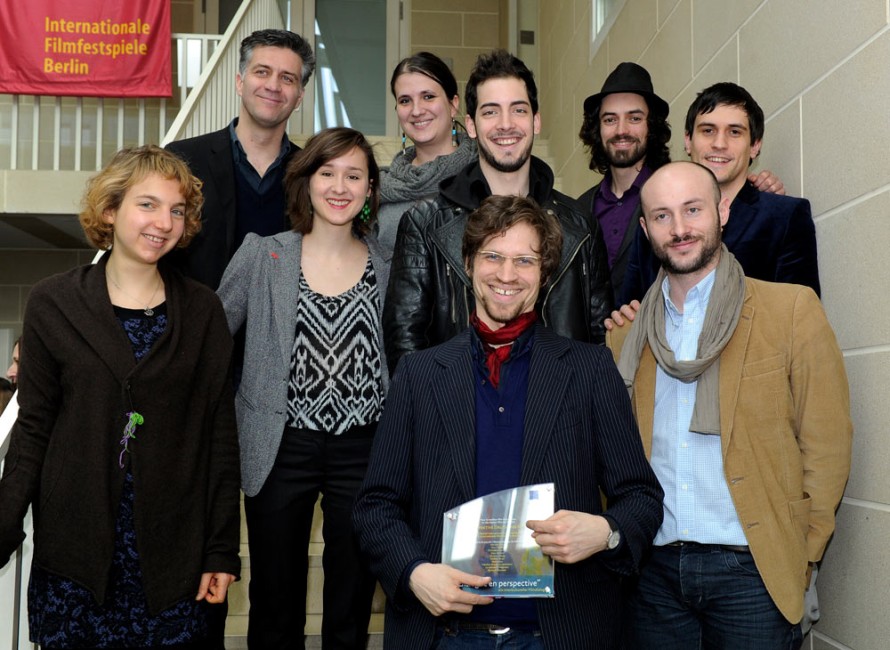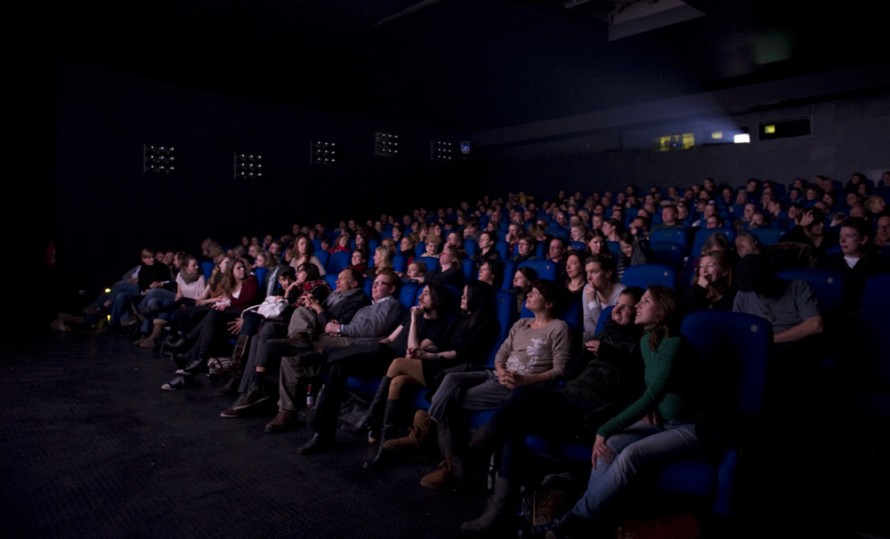2011
61st Berlin International Film Festival
February 10 – 20, 2011

Highlights of the Berlinale 2011
“When politics, imagination and glamour are in synch, when the festival planet and the real world cross paths – those are precious, magical moments.” – Christiane Peitz, Der Tagesspiegel, February 20, 2011
What do you do when the utopias of cinema are overtaken by events in the real world? Looking at the upheaval in the Arab world, one could get the impression that the most important images of early 2011 were found neither in the cinema nor on television, but on online video platforms and social networks. The Jasmine Revolution took place in Tunisia at New Year’s and quickly became “a model for millions of Arabs who had suffered under their corrupt rulers,” as Spiegel Online put it. On the second day of the festival Egyptian president Husni Mubarak stepped down, thanks to the uninterrupted demonstrations on Tahrir Square in Cairo. An era came to an end. Mubarak was the sole ruler of the Arab country for 20 years. Day after day, country after country, new forms of resistance in the name of freedom erupted. During the festival period, the geopolitical map was rewritten.
The Berlinale sees green
An irruption of the political also affected the opening evening of the 61st Berlin International Film Festival in the Berlinale Palast – where one seat had to remain empty: that of the Iranian filmmaker Jafar Panahi. He was unable to assume his role on the International Jury, because he and his director colleague Mohammad Rasoulof were sentenced to six years in prison and banned from working in their profession for 20 years. During the opening gala jury president Isabella Rossellini read an open letter from Panahi – a moving moment, in which one thing became clear: the director wouldn’t let his hope or his dreams be taken away from him. “The reality is they have deprived me of thinking and writing for twenty years, but they can not keep me from dreaming that in twenty years inquisition and intimidation will be replaced by freedom and free thinking,” wrote the director. Looking at the world events of February 2011 one could get the impression that this dream was already beginning to be fulfilled in parts of the Arab world.

Isabella Rossellini reading out the open letter from Jafar Panahi at the opening
The Berlinale reacted to the travel ban of the jury member. Besides a podium discussion with Iranian filmmakers and artists on the topic of censorship and restrictions of freedom and expression in Iran, a special programme with several of Jafar Panahi’s films was screened in some of the festival sections. The highpoint was the screening of Offside (Silver Bear – Jury Grand Prix 2006) as part of the Competition. The big names of the German film scene assembled on the Red Carpet to visibly demonstrate their solidarity with the Iranian filmmaker. Their motto was green, the colour of the suppressed Iranian revolution of 2009.
But all the outcry could not help – Panahi was not allowed to leave Iran, making it all the more enjoyable to see the film of another Iranian director honoured with the Golden Bear and two Silber Bears: Jodaeiye Nader az Simin. Besides the award for the best film, Asghar Farhadi’s family drama received two Silver Bears for the performances of the actresses and the ensemble of actors. The Hungarian director Béla Tarr received the Grand Prix of the Jury for his film A torinói ló, according to him, his last. The Silver Bear for the Best Director stayed in Germany: Ulrich Köhler brought home the prize for his work on Schlafkrankheit. The Mexican film El premio by Paula Markovitch was honoured with two Bears: the cinematographer Wojciech Staron and the set designer Barbara Enriquez shared the award for an Outstanding Artistic Achievement ex aequo. The American director Joshua Marston and his co-author Andamion Murataj were awarded for their script of The Forgiveness Of Blood and the German director Andres Veiel received the Alfred Bauer Prize for his first feature Wer wenn nicht wir. For the first time since 2002, the main awards of the short film section Berlinale Shorts were again part of the official closing gala and here Korean film triumphed: the director duo PARK Chan-wook and PARK Chan-kyon won the Golden Bear with PARANMANJANG, while Yang Hyo-joo received the Silver Bear for her film Pu-Seo-Jin Bam.
The award announcements were met with benevolence and satisfaction in the press and were the finale to a diverse Competition programme: “This year’s films require openness,” wrote Robert Weixlbäumer in tip magazine with respect to the diversity and uniqueness of the selected films. This diversity fit perfectly to the Festival Director Dieter Kosslick’s motto for the Berlinale 2011, which was intended to open up as many doors to the “future of film as an art form” as possible.

Josh Brolin, Hailee Steinfeld and Jeff Bridges having fun at the Photo Call
The 61st Berlinale began with the western True Grit by Joel and Ethan Coen. Stars and starlets bustled across the Red Carpet. The Coen Brothers brought along their actors Jeff Bridges and Josh Broslin, whose appearance was even overshadowed by that of a 14-year-old girl: lead actress Hailee Steinfeld enchanted the entire mob of onlookers and photographers with her smile. For the most enthusiastic fans at the Berlinale, the festival was to provide countless opportunities to score hotly contested autographs from the stars: Helena Bonham Carter, Colin Firth, Diane Kruger, Harry Belafonte, Ralph Fiennes, Jeremy Irons, Kevin Spacey and many others. Lim Soo-jung and Hyun Bin, the lead actors from the Competition film Saranghanda, Saranghaji Anneunda, caused a ruckus amongst mostly Asian fans when they arrived on the Red Carpet.
New viewing technologies
On February 13, the Berlinale trailer celebrated a world premiere of its own: it was shown in 3-D for the first time. February 13 was the day that 3-D technology entered the repertoire of the Berlinale. On that Sunday three 3-D films celebrated their world or European premieres and the selection couldn’t have been more colourful. A French animation film, Michel Ocelot’s Les contes de la nuit, kicked things off, to be followed by two great German directors of international standing. Wim Wenders presented his dance film PINA, as a cinematic memorial to the choreographer Pina Bausch who died in 2009. At the end of the evening Werner Herzog showed his documentary Cave Of Forgotten Dreams. Herzog manages to connect the oldest traces of the production of imagery by humans – the cave paintings in Chauvet in southern France – with the cinematic state of the art. The world premiere of PINA drew the German political elite to the Berlinale Palast: Chancellor Angela Merkel as well as President Christian Wulff and the Commissioner for Culture and the Media Bernd Neumann all showed up in fetching 3-D glasses. With this selection the Berlinale set a new course: away from mainstream cinema, where 3-D technology was always found previously, to arthouse 3-D cinema.
A modern classic
This year’s Retrospective was dedicated to the Swedish director Ingmar Bergman who died in 2007. Section director Rainer Rother presented the film series in the context of the exhibition “Ingmar Bergman – Truth and Lies” in the Berlin Museum for Film and Television, which exhibited previously unpublished materials from Bergman’s estate. This package tried to open new perspectives about a film auteur who, unjustly, was considered fully understood, according to Rother, who welcomed Bergman’s long-time companions, the actresses Liv Ullmann and Harriet Andersson and the Swedish filmmaker Stig Björkman to Berlin.

Armin Mueller-Stahl and Costa-Gavras at the Honorary Golden Bear award ceremony
In 2011 the Homage honoured one of Germany’s greatest actors, Armin Mueller-Stahl. A comprehensive film programme, which shed light on every angle of Mueller-Stahl’s creative force, from films by Frank Beyer to David Cronenberg. The highpoint was the gala presentation of Music Box, the winner of the Golden Bear in 1990. That evening Mueller-Stahl was handed the Golden Bear for his lifework and the laudatory speech was held by none other than the film’s director Costa-Gavras. This way, the Greek-French filmmaker could return a favour: Armin Mueller-Stahl held the laudatio when Costa-Gavras received the Berlinale Camera in 2002.
Films at eye level
In the children’s and youth section Generation, the premieres of the Kplus and 14plus Competition took place for the first time under the single roof of the Haus der Kulturen der Welt, after the Zoo Palast became unavailable due to remodeling work. The section head Maryanne Redpath and her deputy Florian Weghorn were enthused about films at eye level with the themes and perspectives of younger generations and, all in all, a very strong programme in 2011. And so it wasn’t surprising, that the winning film picked by the 14plus youth jury, On the Ice directed by Andrew Okpeaha MacLean, also won the Best First Feature Award at the Berlinale closing ceremony.
In the Perspektive Deutsches Kino section, new section head Linda Söffker celebrated her first year with bravado. She presented a young German cinema that showed new perspectives that positioned itself between the coordinates of a unique signature style and the directors’ unbroken love of experimentation. The section was able to gain German filmmaker Romuald Karmakar as jury chairman of the “Dialogue en perspective” competition, in which one film stood out, a film that could enrich established cinema with new forms of cinematic narration: Die Ausbildung, directed by Dirk Lüttner. Perspektive Deutsches Kino also invited the documentary Stuttgart 21 – Denk mal! and gave space to civil disobedience in Germany’s current political situation. The concept of the Wutbürger (‘rage-citizen’) was voted word of the year 2010. And yet – in light of the images of the civil war developing in the cities of Libya, which was entering public awareness more and more towards the end of the festival, the strategies of resistance against the redevelopment of the Stuttgart train station appeared to be a footnote of history.

The jury with the 2011 winner of the prize "Dialogue en perspective" Dirk Lütter
The Forum, with its films, placed heavy emphasis on investigating family relationships. The question of possible forms of communal living ran through the programme like a thread. And “cinematically, it was worth it…more than ever before, to watch the Forum’s programme” (Günter H. Jekubzik, Filmtabs, Feb 18, 2011). Dreileben¸a three-part joint work by Dominik Graf, Christian Petzold and Christoph Hochhäusler, belonged to those films that drew a lot of attention, also internationally. In the small Forum retrospective, a Japanese director almost completely unknown in Germany, was introduced: Shibuya Minoru. Against the backdrop of the political events in Egypt, the Forum was able to put together a programme of short films and trailers from independent Egyptian filmmakers under the title "Traces of Change in Egypt", while a monitor in the foyer of the Filmhaus displayed video messages from participants of the protests directed towards the Berlinale audience.
The Panorama celebrated world cinema in all its diversity. Section head Wieland Speck praised the unbroken power of independent cinema. The films positioned themselves between the poles of a hermetic-intimate existential cinema and genre craftsmanship. The Panorama Dokumente series provided, with a noticeable high number of artist portraits, interesting views into the fringes of German-German history. The image of inner-German relations since the 1950s crystallized with illustrious characters such as the nightclub owner Rolf Eden and the photographer Herbert Tobias.
Good nutrition, ecologically responsible food production, fair trade conditions and, last but not least, the delicious connection between film, cuisine and culture – the themes of the Culinary Cinema have entered the mainstream. Accordingly, the fifth edition, this year with the tagline “Give Food a Chance” of the series was as popular as ever.
A further hit with audiences was the “Berlinale goes Kiez” series, launched in 2010 and continued in 2011 with continued success. From Steglitz to Friedrichshagen, night after night, a local Berlin repertory cinema was transformed into a setting for the Flying Red Carpet. Celebratory patrons such as Tom Tykwer, Leander Haußmann and Marie Bäumer welcomed audiences and the film teams.

„Berlinale goes Kiez“ 2011 im Yorck-Kino
And while, during the ninth Berlinale Talent Campus, 350 young filmmakers worked, filled with hope, on their personal approach to the international film industry under the banner “Framespotting: Filmmakers positioning themselves”, the European Film Market and the Berlinale Co-Production Market were pleased about a strong year with a good atmosphere, satisfied participants and many successful business encounters.
One day after the end of the 61st Berlinale, government buildings burned in another Arab country – in Libya, giving the impression that the festival was overtaken by geopolitical realities. But only if you ignore one fact – that politics aren’t just formed on public squares and in the voices of thousands of people, but also in the most intimate, most private and daily actions – as thematized by the Golden Bear winner Jodaeiye Nader az Simin. The story of Jafar Panahi, who was prematurely stripped of the chance to realize his dream, shows that the struggles for liberation have yet to be won.
Facts & Figures of the Berlinale 2011
| Visitors | |
|---|---|
| Total amount of theater visits | 484,860 |
| Tickets sold | 299,562 |
| Professionals | |
| Accredited guests (press excl.) | 15,532 |
| Countries of origin | 115 |
| Press | |
| Journalists | 3,825 |
| Countries of origin | 81 |
| Screenings | |
| Number of films in the public programme | 352 (incl. 100 short films) |
| Total amount of screenings | 932 |
| European Film Market | |
| Film industry participants | 6,982 |
| Number of films | 741 |
| Number of screenings | 1,046 |
| EFM-Stands (Martin-Gropius-Bau & Business Offices) |
132 |
| Number of exhibitors | 400 |
| Berlinale Co-Production Market | |
| Participants | 483 |
| Countries of origin | 43 |
| Berlinale Talent Campus | |
| Participants | 356 |
| Countries of origin | 87 |
| Annual budget | € 19.5 million |
| The Berlin International Film Festival receives € 6.5 million in institutional funding from the Federal Government Commissioner for Culture and the Media in accordance with a decision by the German Bundestag. | |